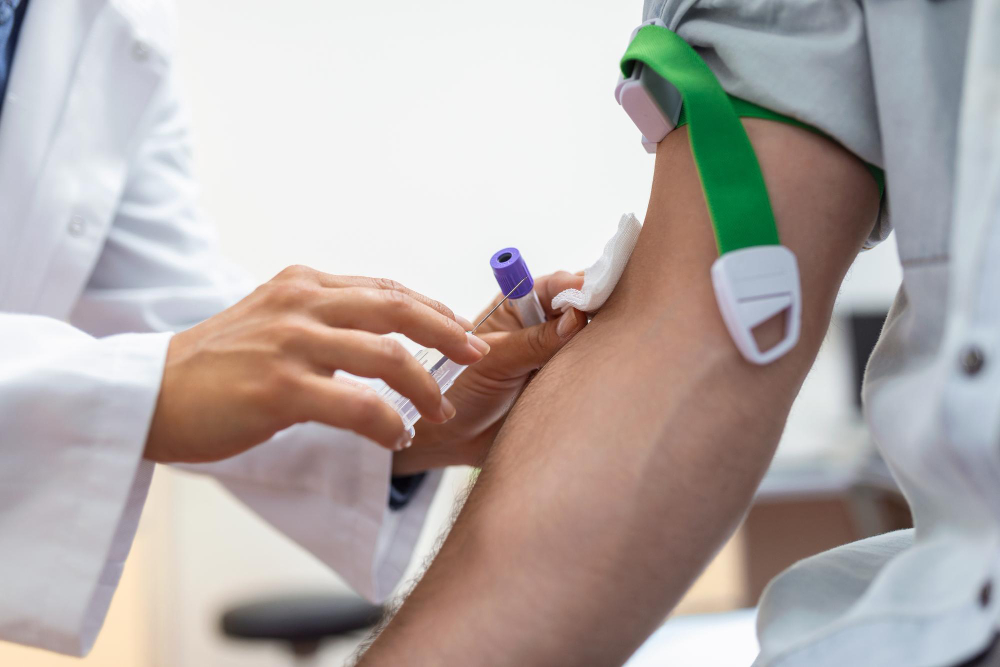Blood clotting is an essential process that keeps our bodies safe. When we get a cut, our blood quickly tries to form a plug to stop the bleeding. This is the body’s way of repairing itself and preventing further blood loss. This process is like having an emergency repair squad on standby whenever there’s an accident.
The blood clotting test overview is important. Doctors often use it to monitor how well our blood clots in medical diagnostics. It’s like being able to peek under the hood of a car to ensure everything is working fine. If things don’t clot as they should, it can lead to problems. Blood clots are like band-aids for our blood vessels, but if they form excessively or not at all, havoc can occur.
Various disorders can affect our blood clotting. For instance, excessive clotting might lead to heart issues or strokes. On the other hand, if blood doesn’t clot well enough, we may suffer from conditions where we bleed excessively even from small cuts. So, understanding how this process works helps keep us healthy and informed.
The connection between blood clotting and health isn’t something we think about every day. But it’s crucial. Just like keeping an eye on other health factors, knowing how our blood clots can help prevent surprises. For those reasons, a clotting panel test explanation can make a big difference in knowing how our bodies respond to injuries.
Decoding the Clotting Panel Test: Components and Process
The clotting panel test explanation starts with its purpose. This test examines how fast and efficiently our blood clots. It’s a key player in helping diagnose a variety of health issues. Think of it as a medical detective looking for clues about your health.
Key measurements in this test include Prothrombin Time (PT) and Activated Partial Thromboplastin Time (APTT). These fancy terms basically measure how long it takes for your blood to start clotting. Platelet count is another measure that tells us about the tiny cells helping form clots.
A step-by-step approach to conduct a clotting panel is simple. First, a small blood sample is taken, usually from your arm. It’s no more painful than a typical shot at the doctor’s office. Next, this sample is analyzed in a lab to see how fast and effectively it clots. In essence, it provides a coagulation profile explanation of your body’s response to an injury.
There are common signs or conditions that may require this test. You might need it if you have unexplained bruising or if your blood doesn’t clot easily. If a doctor suspects a blood clotting test overview of disorders, or even if you’re on medications that affect clotting, knowing how well your blood clots is crucial.
Interpreting Results: The Significance of Clotting Panel Tests
Learning clotting test interpretation helps us make sense of the results. A normal result indicates your blood clots are just as they should. But if results are abnormal, doctors will look further to see what’s up.
Abnormal results can mean different things. They might suggest bleeding disorders or risk of clot-related conditions such as thrombosis. Results influence decisions on your care path. Steps for response might include medications or lifestyle adjustments. Think of it as getting a traffic light showing where your health stands.
After clotting panel test insights and receiving results, follow-up actions vary. If your results flag concerns, additional tests might be recommended. This ensures your health is constantly monitored and maintained.
Knowing the significance of coagulation panels, it’s clear that these tests help diagnose conditions like bleeding disorders and blood clots. With a proper understanding of your blood’s behavior, you can reduce risks in the future.
Addressing Concerns: Myths and Facts About Clotting Panel Tests
There are some myths about these tests. One common myth is that they’re painful or risky. This isn’t true. The clotting panel test explanation should ease concerns as it’s simply a regular blood test, no different than any other.
Preparing for the test doesn’t require much. You might be asked to fast or skip certain medications, but that’s about it. Changes in lifestyle aren’t usually necessary.
Several factors can affect the factors affecting clotting tests. Medications, like blood thinners, can change results. Diet and stress can also impact how blood clots. This is why doctors sometimes give tips or instructions before taking the test.
One reassuring fact is the benefits of timely testing. By taking a proactive role in their health, patients can avoid unexpected complications. Regular tests mean staying one step ahead and making informed health decisions.
Understanding coagulation panels provides peace of mind and actionable insights into personal health. So, if you’re curious about these tests or need them as part of your care, knowing the basics makes the process smoother and less intimidating.


